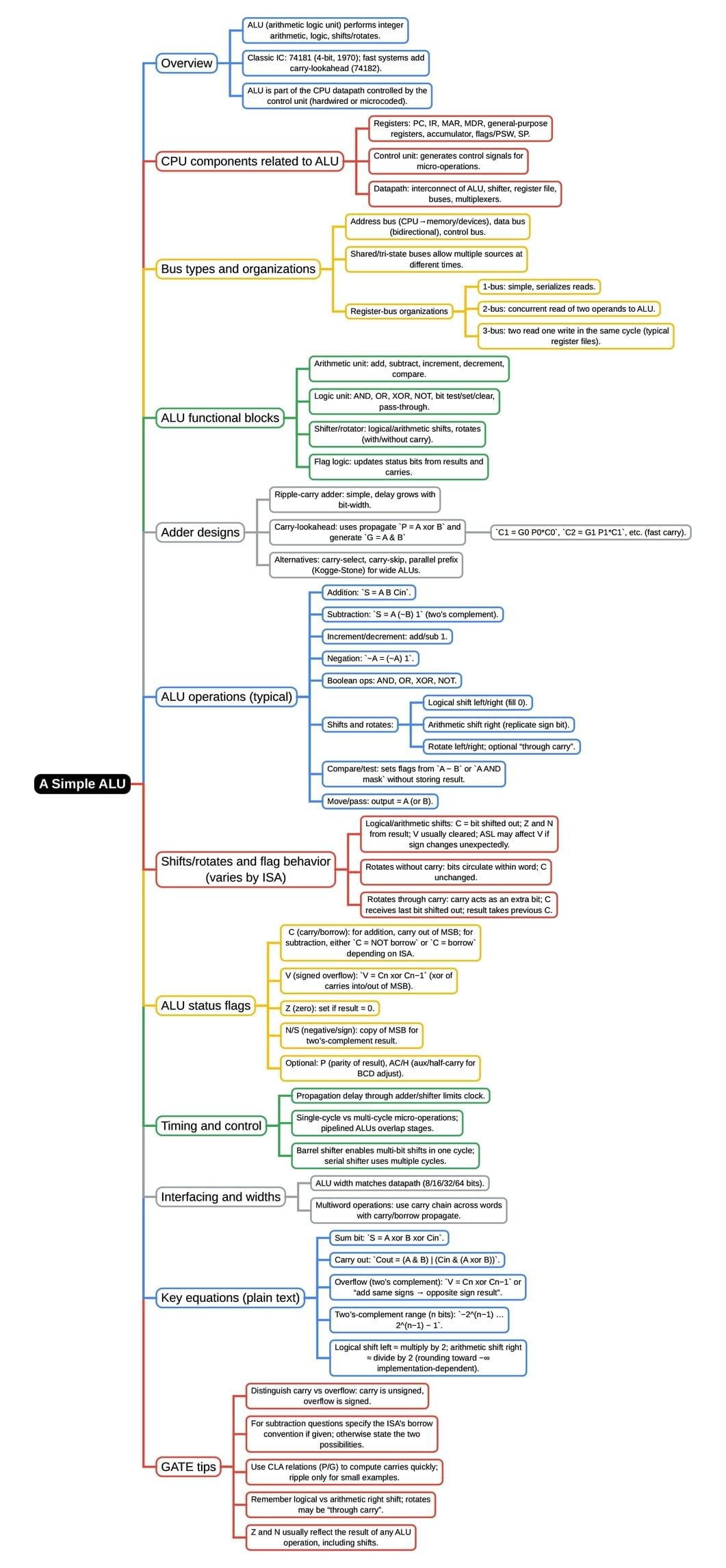Electrical Engineering (EE) Exam > Electrical Engineering (EE) Notes > Digital Electronics > Mind Map: A Simple ALU
Mind Map: A Simple ALU | Digital Electronics - Electrical Engineering (EE) PDF Download

The document Mind Map: A Simple ALU | Digital Electronics - Electrical Engineering (EE) is a part of the Electrical Engineering (EE) Course Digital Electronics.
All you need of Electrical Engineering (EE) at this link: Electrical Engineering (EE)
|
113 videos|91 docs|58 tests
|
FAQs on Mind Map: A Simple ALU - Digital Electronics - Electrical Engineering (EE)
| 1. What is an Arithmetic Logic Unit (ALU) and what are its primary functions? |  |
Ans.An Arithmetic Logic Unit (ALU) is a crucial component of a computer's CPU that performs arithmetic and logical operations. Its primary functions include addition, subtraction, multiplication, and division for arithmetic operations, as well as bitwise operations such as AND, OR, NOT, and XOR for logical operations. The ALU takes inputs in the form of binary numbers and outputs the result of the computations.
| 2. How does an ALU differ from a CPU? |  |
Ans.An ALU is a subset of the Central Processing Unit (CPU). While the CPU is responsible for executing instructions and managing the overall operation of a computer, the ALU specifically handles the execution of arithmetic and logical operations. The CPU contains other components like the control unit and registers, which work together with the ALU to perform complex computing tasks.
| 3. What are the common types of operations performed by an ALU? |  |
Ans.Common operations performed by an ALU include basic arithmetic operations such as addition, subtraction, multiplication, and division. In addition to these, it also handles logical operations like AND, OR, NOT, and XOR. The ALU can also perform shifts and rotates on binary data, which are essential for various computational tasks.
| 4. What is the significance of the ALU in digital electronics? |  |
Ans.The ALU is significant in digital electronics as it serves as the fundamental building block for performing calculations and making decisions in digital systems. It allows computers and other digital devices to process data efficiently. The efficiency and speed of the ALU directly affect the overall performance of the system, making it a critical component in the design of microprocessors and embedded systems.
| 5. How is the performance of an ALU measured? |  |
Ans.The performance of an ALU is typically measured in terms of its speed, which is often represented by the number of operations it can perform per second. Other factors include the complexity of operations it can handle, power consumption, and size. Advanced ALUs may include features like pipelining and parallel processing capabilities to enhance performance further.
Related Searches















